Disclosure: Please note that some links are affiliate links, and at no additional cost to you, we earn a commission if you make a purchase.
If you would like to support this website in some way, using these links will help do exactly that.
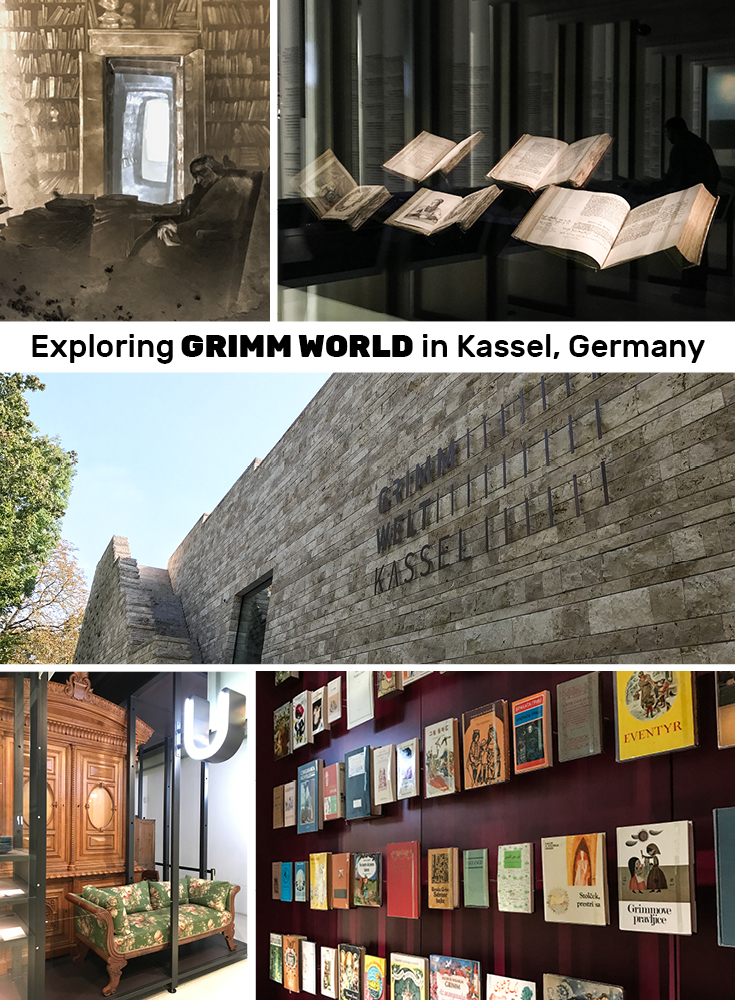
Have you ever visited a city, solely for the museums? I do all the time. On our last adventure into Germany, I was lured to the city of Kassel by the siren song of the modern, hip, intriguing promise of visiting GRIMMWELT, literally in English GRIMM WORLD, a museum that is dedicated to EVERYTHING Grimm brothers. This museum goes beyond the fairy tales to include their work on a German dictionary, and includes in their scope the work of other Grimm siblings. Opened in 2015, everything is clean, open, modern, spacious, minimalist, and innovative. It's equal parts biographic, linguistic heritage, and art museum. It's a museum that strives not to be your typical, stuffy museum, and is very successful in that endeavor!
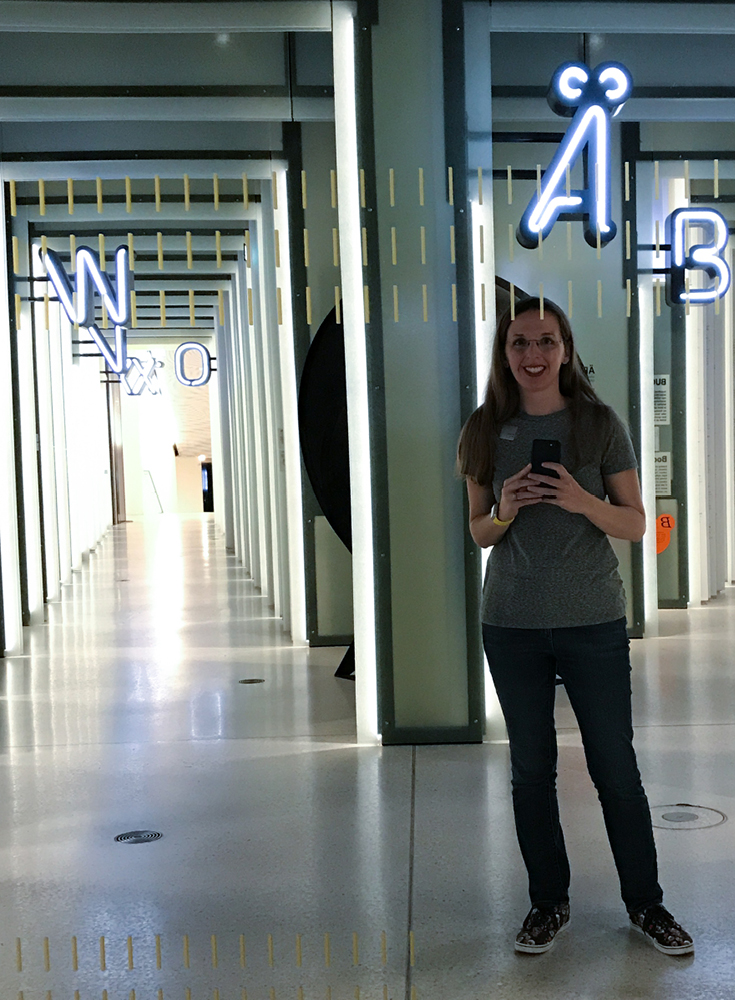
The organization of the museum is navigated by the alphabet, and a modern LED letter marks exhibits on both floors. However, you do not progress through the museum in alphabetical order. It irked me at first that the letters are out of order, but there’s a reason for this choice. Without being fluent in German, it's a little overwhelming to try and understand why a specific letter corresponds with an exhibit, but they provide a PDF guide in English to help.
Jacob and Wilhelm Grimm’s Lifelong Projects
The main floor of GRIMM WORLD is dedicated to Jacob and Wilhelm Grimm’s lifelong projects of creating a German dictionary, translating stories, and collecting German folk and fairy tales. I was astonished to see how many personal belongings they had in their collection. They had scissors, delicate paper cut outs, first editions of their fairy tale collection from 1812 and 1815 with their handwritten notes in the margins, and first editions of other language translations that the brothers completed. These precious books were in glass display cases with safe lighting, and the exhibit room itself was designed to feel like flipping through the pages of a book.
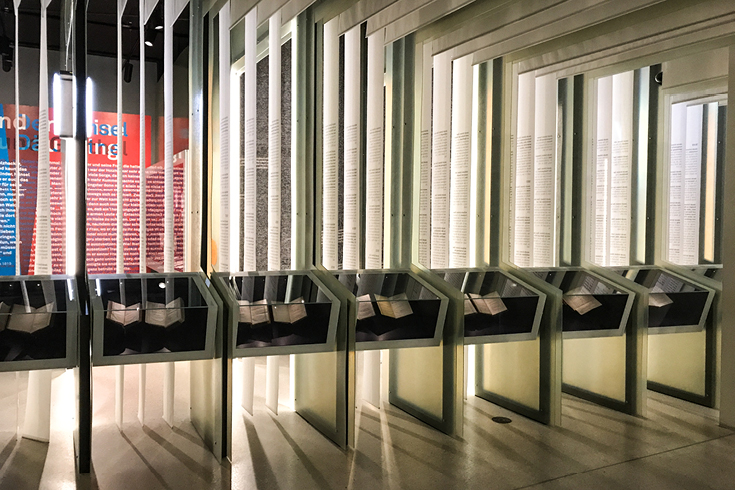
During their lifetime, the Grimm brothers completed words from A to the letter F for a German dictionary, and the dictionary itself was completed a hundred years after the brothers’ deaths. Why would you want to learn about the history of the German dictionary while visiting a city? GRIMM WORLD makes learning about it interesting and worthwhile through jaw-dropping artwork. I soon realize that the earlier exhibit of the Grimm’s personal scissors and paper cut outs were foreshadowing artist Alexej Tchernyi’s fourteen hand-cut paper three-dimensional dioramas about the German dictionary’s history. They’re incredible!
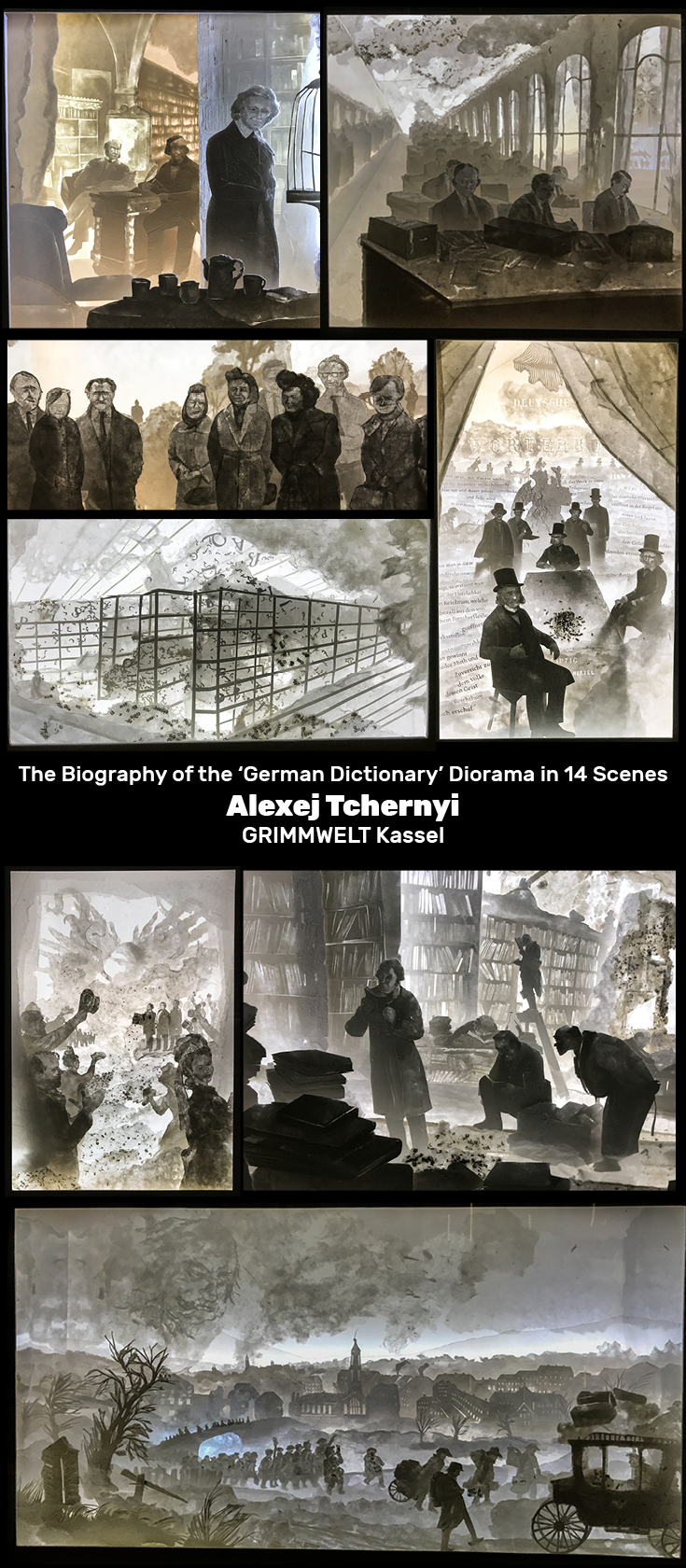
The dioramas are hosted in a very dark exhibit hall and are theatrically lit from within. Each of the scenes has descriptions below in English and German. At the end of this floor is a massive wall of copies of Grimm’s fairy tales translated across sixty-three different languages, transitioning into the lower floor marked by tree roots that delves deeper into Grimms’ fairy tales.
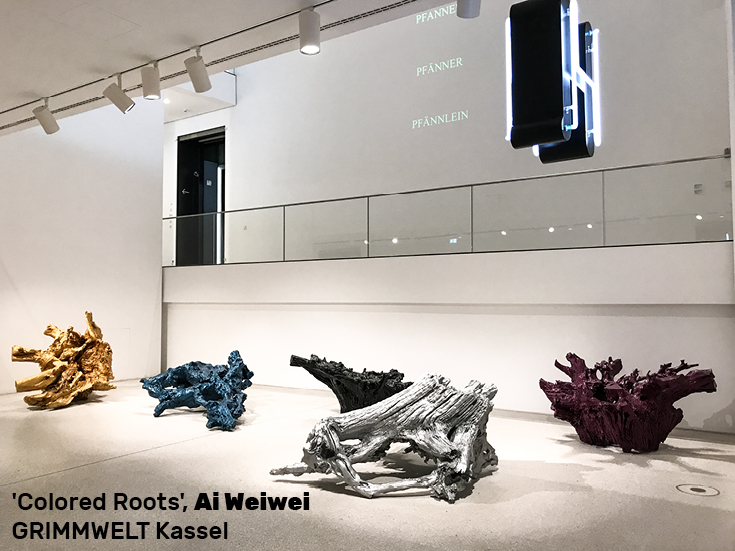
Colored Roots Sculpture by Ai Weiwei
GRIMM WORLD benefits from contemporary artwork in exploring the theme of 'Roots' in the brothers’ work. In the mezzanine level, five different tree roots have been painted solid metallic colors. But why? At first I wonder if it's related to the idea of fairy tale forests, but I learn Ai Weiwei, a Chinese artist with deep attachments for the city of Kassel, meant for the sculpture to be two-fold, not only fairy-tale forests, but also representing the brothers’ intense study and fascination of the ‘roots’ of words and how the Germanic language has grown and changed over time. The tree roots that he used for the sculpture were brought over from China!
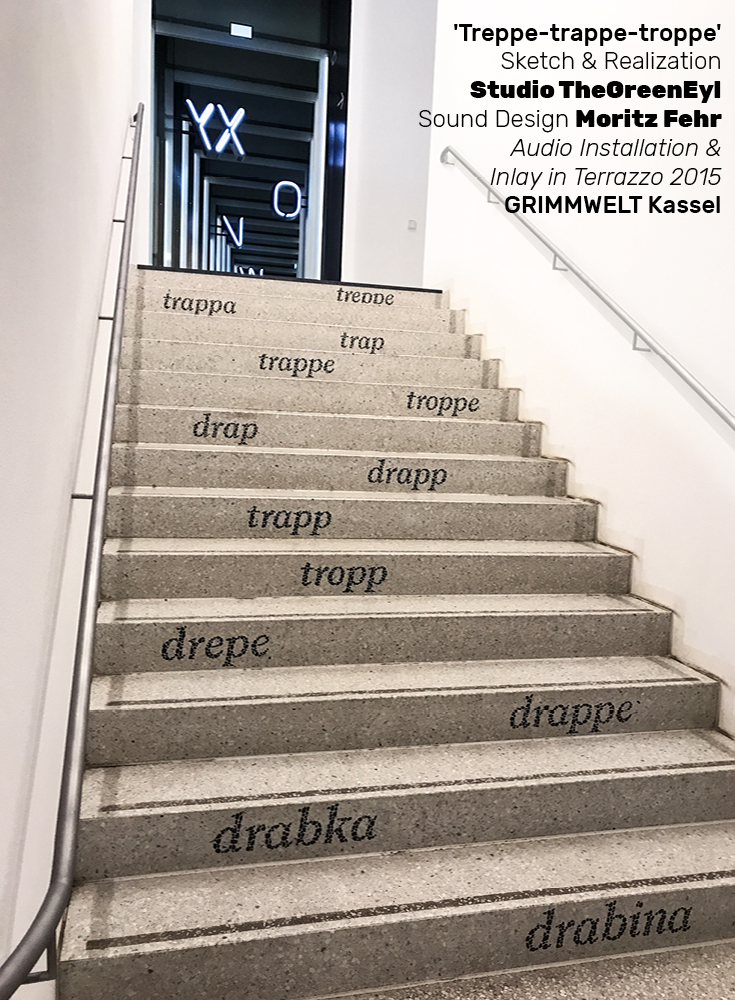
Treppe Troppe Drappe Installation by Studio TheGreenEyl
As you descend stunning terrazzo steps to the rest of the exhibits, motion sensing audio is triggered, surprising the intrepid museum explorer into wondering if the stairs are enchanted? Sort of! Art comes to the rescue again to explain the Grimm brothers’ interest in how something sounds affects the development of the word itself. To illuminate, as you make ‘trip-trap’ sounds down the treppe, the German word for stairs, you’ll hear voices say versions of the word treppe across time. Very clever!
Now Entering The World of Fairy Tales
The bottom floor is surreal, clever, and surprising. I didn’t know where to look first! To the left you see a larger than life sculpture ‘Maerchenbombe’ or Fairy Tale Bomb by the artists Lutz and Guggisberg, rightly titled as it looks like a big egg has hatched and little creatures are escaping towards the visitor.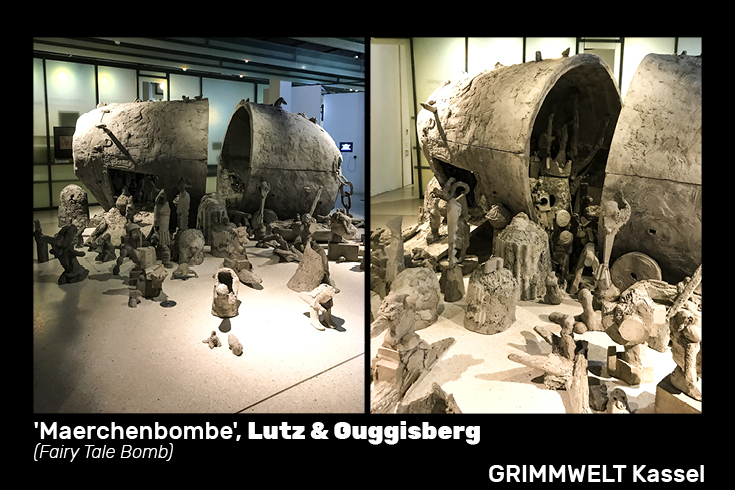
To the right is ‘Hedge of Thorns,’ or columns of artificial turf that natural curiosity beckons you to explore. Hopping along on the floor, are projected images of frogs, or frog princes? ‘Hedge of Thorns is one part of a six-part series of installations called ‘The World of Fairy Tales.’ We had a great time trying out each part and seeing what the artists had in store for us. My favorite being ‘At The Table with the Seven Dwarfs.’ I sat down as directed, and my image was projected into a scene where the dwarves interacted with me as though I was a surprise guest.
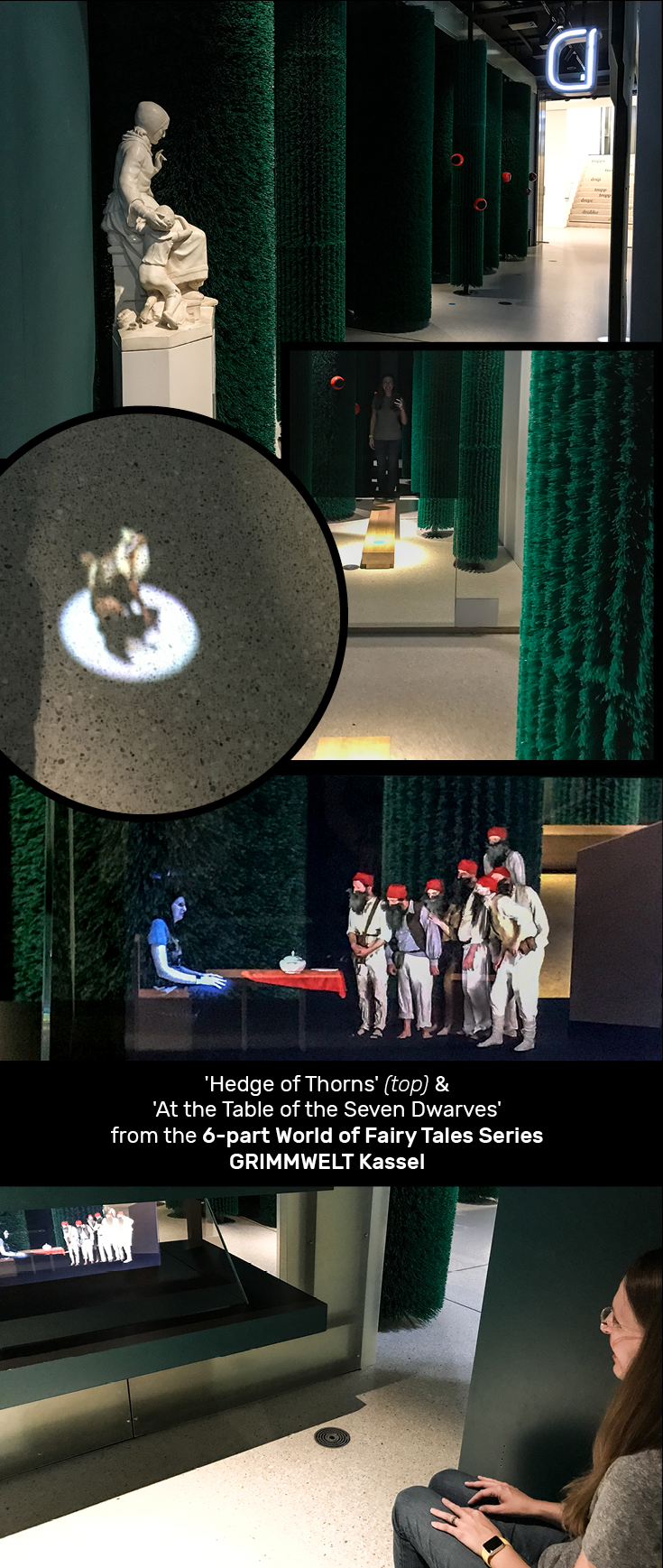
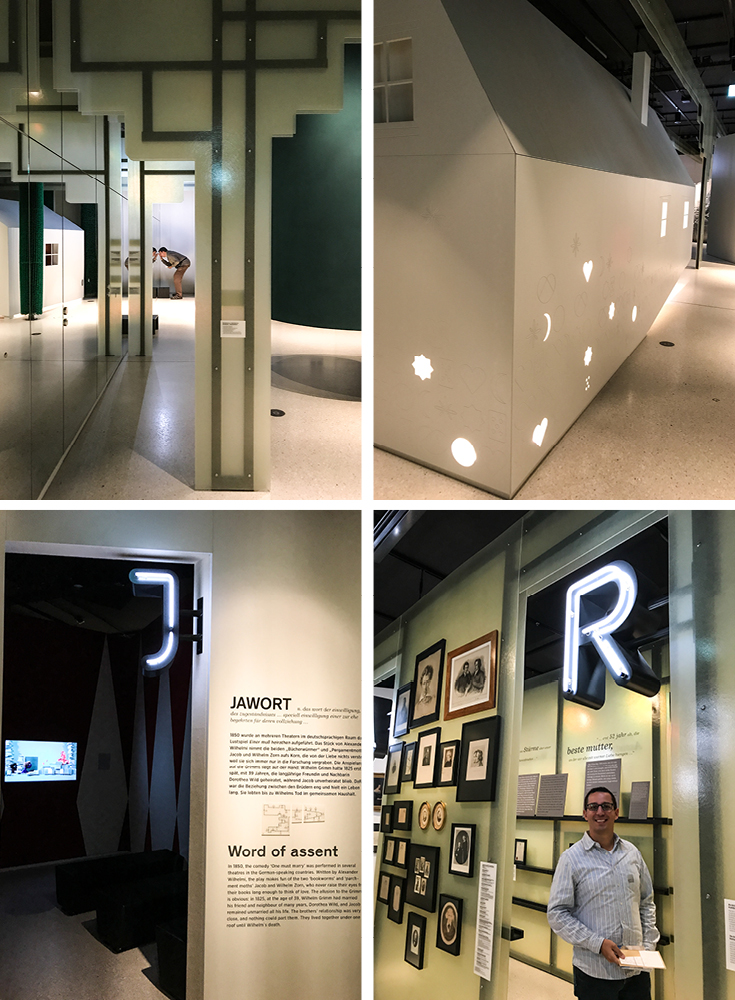
The Other Brother Grimm: Artist Ludwig Emil Grimm
After, the exhibits circle back to what the daily life of the Grimm family was like through original furniture on display, examples of the foods they ate and how their sister improvised with leftovers, and personal narratives and sketches from another Grimm brother, Ludwig Emil Grimm. I always assumed that there were only two brothers Grimm, Jacob and Wilhelm, but that’s not true. The two brothers were of six siblings who survived infancy. It is often said that Ludwig Emil’s illustrations greatly helped make the original Grimm’s fairy tales a success.
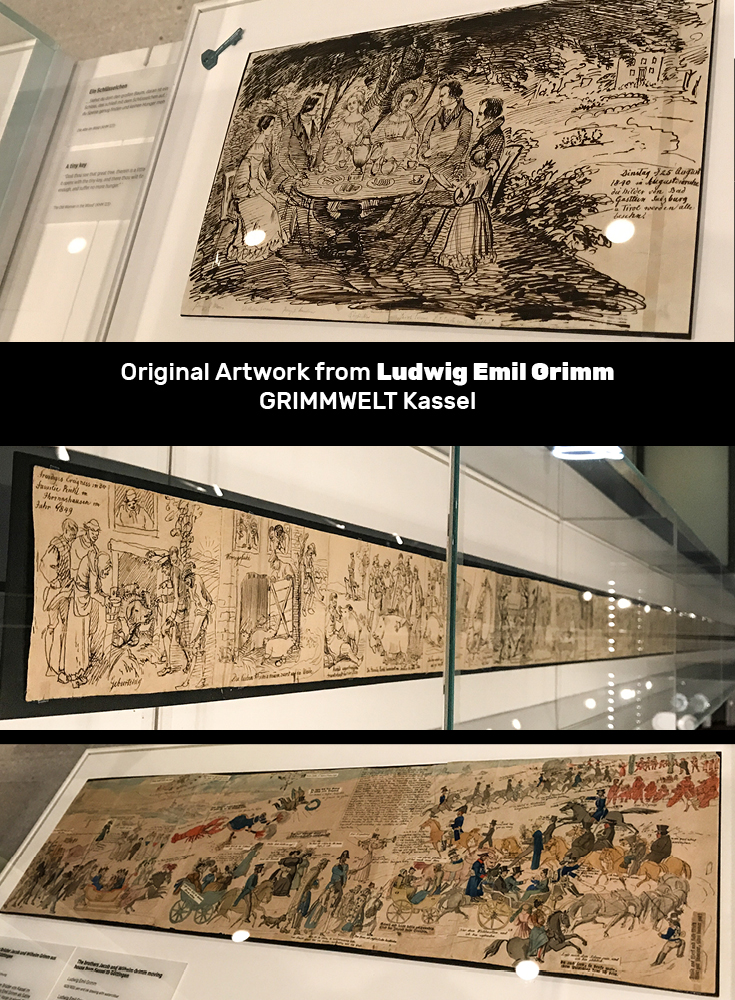
I fell in love with Ludwig Emil’s work upon sight. GRIMM WORLD Kassel has several original sketches and illustrations. My favorite was ‘A brief biography of a remarkable and tender sow / born 1849 in Ihringshausen’. Using 30 sheets of paper, he constructed a 25-foot long scroll that tells the life story of a pig that the Grimm family bought from the pig’s birth until it was eaten! I wish there was an English translated version! Its pictured above in the middle of the three pieces.
Café/Restaurant FALADA & Gift Shop
When we were done we had a really good lunch at the on-site restaurant Falada. Sebastian’s Dad had a cappuccino and a slice of cake, Sebastian and I had cheeseburgers and split some fries. It was really good, and has a nice panoramic view over Kassel. The gift shop was small, and not much in English. I was surprised, with subject matter like the Grimm Brothers I was expecting a lavish fairy tale gift shop, but it was lean selection attached to the ticket counter, and only high-brow gifts, posters, and monographs.
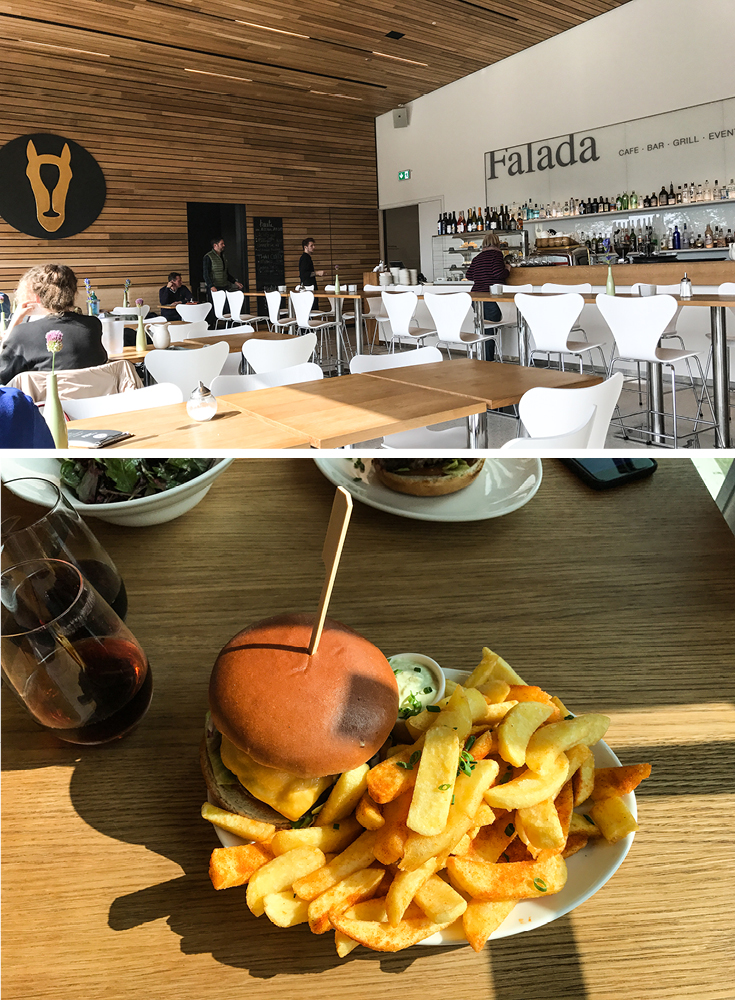
Time Spent at GRIMM WORLD
We spent probably two hours in the exhibits, but could easily see a visit being 2.5-3-hours if you read every single thing and watched all of the movies and documentaries they had playing in the bottom floor. For the most part we all went through the museum on our own, but met up from time to time. There was an immense amount of content to read, so it was difficult for everyone in the group to read the same speed. Everything, or 90% was delightfully in English! For more information, visit their official English language website Grimm World here.
Follow Along
If you enjoyed this article, or these topics sound interesting to you, you'll love our weekly newsletter. You'll receive the newest posts each week and exclusive access to free planning resources like ‘Packing List & Tips for 2 Weeks in Germany’ and ‘Everything You Need to Rent a Car in Germany’.
Thank you for reading!

Our Germany Bucket List has a variety of sources. Some are from German history books that mention a particular city again and again, others because they have a specific castle that has captured my attention, perhaps they have a polar bear residing in the zoo, or I develop a longing to go somewhere from Pinterest. When we are in the early trip planning phase, often I refer back to pins I’ve saved from other travel bloggers. We're so excited that in the next two weeks, we’re visiting our top 4 on our bucket list, Kassel, Bamberg, Leipzig, and Weimar.
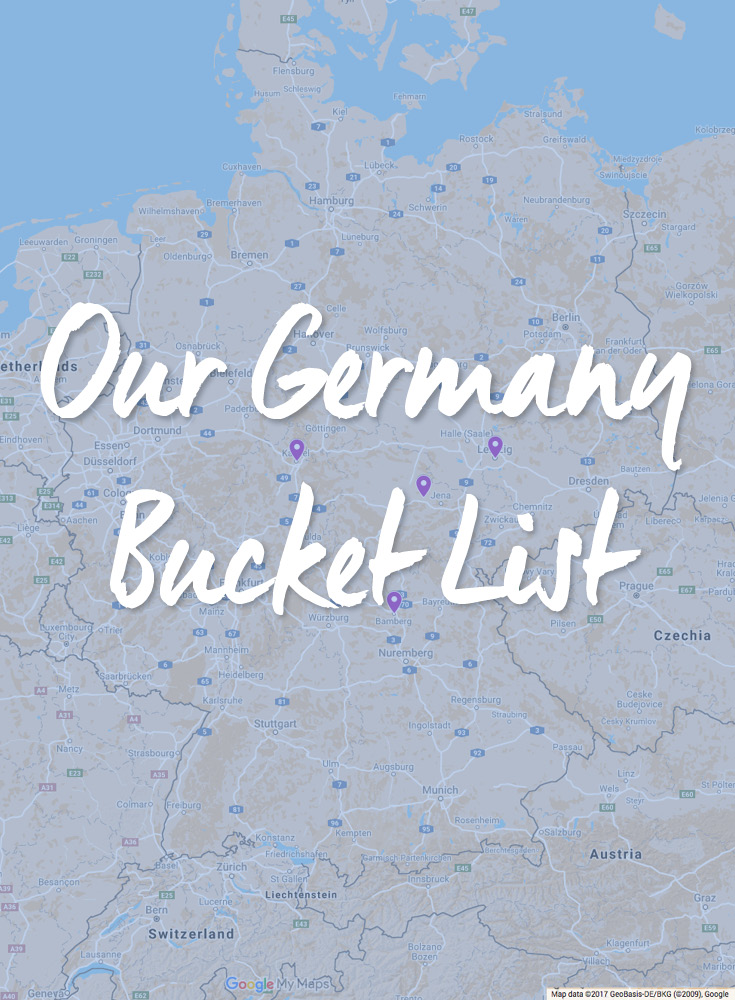
Kassel, a city in the central German state of Hesse
It has a castle that popped up on my radar when I read “Why You Should Visit Wilhelmshöhe Park in Kassel, Germany,” by Tamara for her blog Globe Guide. Her photos captured my imagination and Kassel was swiftly on my list. The grand opening of the Grimm World museum a few weeks ago and plans were put in motion! We’re planning on doing a family day trip with Sebastian’s parents and his sister, since it's only a two hour drive from their home near Frankfurt am Main. Finally, we’re going to Kassel!
Bamberg, a town in southeastern German state of Bavaria
Lorelei of California Globetrotter using the word ‘Bumbling’ in her title “Bumbling Around in Bamberg”, grabbed my attention. I’m a sucker for innovative verb usage! Wow, what a half-timbered beauty, and I can’t wait to take my own photos of the Old Town Hall built atop the Regnitz River. I’m also fascinated by the Market Gardeners’ District that feature active vegetable fields run by two dozen families that is an ongoing example of an early medieval town, and significantly helped Bamberg achieve Unesco World Heritage status.
Leipzig is a city in the eastern German state of Saxony
I first heard about Leipzig in regards to their zoo, that it was exemplary. I did some digging around on Pinterest and found Adelina’s article on her blog Pack Me To, “A Day in Leipzig: History, Bach, and Cake,” and decided to keep digging. It looked like a city that could our entire family entertained for more than a few days. Beyond the Leipzig Zoo, we’re planning on visiting the Museum of Fine Arts (Museum der bilden Künste), Time Historical Forum (Zeitgeschichtliches Forum, charts the history of GDR from division through reunification), and visiting the German National Library. Add in a plethora of historically important cafes, churches, and town squares and we’re going to have an epic trip!
Weimar, a city in the east central German state of Thuringia
This city just won’t be ignored. It's mentioned as consistently as Berlin in my history books. Goethe lived there. Schiller lived there. Nitzche lived there. Weimar is not a day trip city, it's responsible for such a wealth of German culture that you should plan several days to really ‘get it’. I loved the overview and photography that Russell of Roaming Required shared in “Discover Germany’s Cultural Heartland-Weimar”. If you’re fascinated by German history and culture, you’ll want to put Weimar on your list too.
Our bags are packed! Multiple color copies of our itineraries are printed and in page protectors. Yes, page protectors! That’s how we roll. We’re so excited for our annual September trip to Germany! As a result, our blog is on vacation for two weeks, and we look forward to returning the first week of October refreshed and refueled with adventures in Germany. Do you have any suggestions for us before we visit Kassel, Bamberg, Leipzig, and Weimar? What cities in Germany are on your bucket list and why? Let us know in the comments below or send us an email.
Follow Along
If you enjoyed this article, or these topics sound interesting to you, you'll love our weekly newsletter. You'll receive the newest posts each week and exclusive access to free planning resources like ‘Packing List & Tips for 2 Weeks in Germany’ and ‘Everything You Need to Rent a Car in Germany’.
Thank you for reading!

